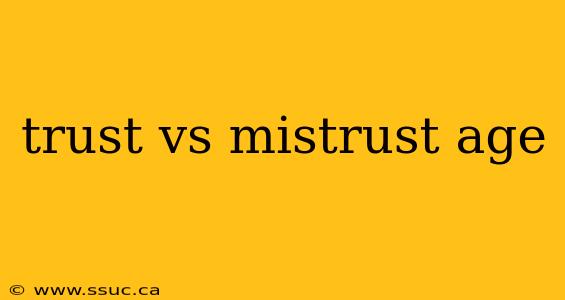In the realm of psychology and human development, Erik Erikson's theory of psychosocial development is a pivotal framework that outlines eight critical stages through which a healthy developing individual passes from infancy to late adulthood. The first stage, Trust vs. Mistrust, takes place from birth to approximately 18 months and plays a crucial role in forming the foundation of a person's personality and emotional well-being. This article explores the dynamics of trust and mistrust during infancy, providing insights into the implications for lifelong development.
What is Trust vs. Mistrust?
According to Erik Erikson, the core challenge during the first stage of development is to develop trust. Infants are completely dependent on their caregivers for their basic needs. When caregivers provide reliable care and affection, infants learn to trust their environment and feel secure in it. Conversely, inconsistent or neglectful caregiving can lead to feelings of mistrust, resulting in insecurity and anxiety.
Why is Trust Important?
Trust is essential for healthy development. When infants experience consistent support and nurturing from their caregivers, they begin to understand that they can rely on others. This foundational trust fosters a sense of safety and security, which is crucial for further developmental milestones. A child who feels secure is more likely to explore their environment, develop social relationships, and engage in learning experiences.
What Happens if Mistrust Develops?
If a child predominantly experiences inconsistency or neglect, they may develop a sense of mistrust. This can manifest as insecurity, anxiety, and difficulties in forming relationships later in life. Individuals who grow up with mistrust may struggle with issues of intimacy and may have a higher propensity for mental health challenges.
Examples and Practical Implications
The Role of Caregivers
Caregivers play an essential role in establishing trust. For instance, when a caregiver promptly responds to a baby's cries for hunger or comfort, the child learns that their needs will be met. This builds a sense of reliability in their immediate world.
Example: Imagine a mother who consistently feeds her baby when they cry. Over time, the baby learns that they can depend on their mother for comfort and sustenance, fostering a sense of trust. In contrast, if the mother frequently ignores the baby's needs or is emotionally unavailable, the child may grow up feeling abandoned and develop a sense of mistrust towards others.
Long-term Effects of Trust vs. Mistrust
The implications of trust or mistrust extend well beyond infancy. Children who develop a strong sense of trust are more likely to exhibit healthy social behaviors and successful relationships in later stages of life. They are typically more adaptable, resilient, and optimistic about their interactions with others.
Conversely, children who face significant mistrust may become adults who find it difficult to rely on others, potentially leading to isolation or difficulties in building and maintaining intimate relationships.
Enhancing Trust in Infancy
Parents and caregivers can foster an environment of trust by:
- Being Responsive: Quickly attending to an infant's needs encourages them to express themselves openly.
- Providing Consistency: Regular routines can help infants feel more secure.
- Engaging in Positive Interactions: Playful and loving interactions contribute to a trusting relationship.
Conclusion
Understanding the dynamics of trust versus mistrust in infancy is crucial for caregivers and educators alike. By recognizing the significant role this first stage plays in human development, we can better support infants as they navigate this critical period. Creating a nurturing and responsive environment can lay the groundwork for healthier relationships and personal development as children grow.
For a deeper dive into developmental psychology and further discussions about Erik Erikson's stages of psychosocial development, please check out relevant publications on Academia.edu.
This article provides an overview of trust and mistrust during infancy, highlighting the significance of these early experiences and their lasting impact on individuals. The information presented here is supplemented by practical examples and strategies for fostering trust, making it not only informative but also actionable for readers interested in child development.
